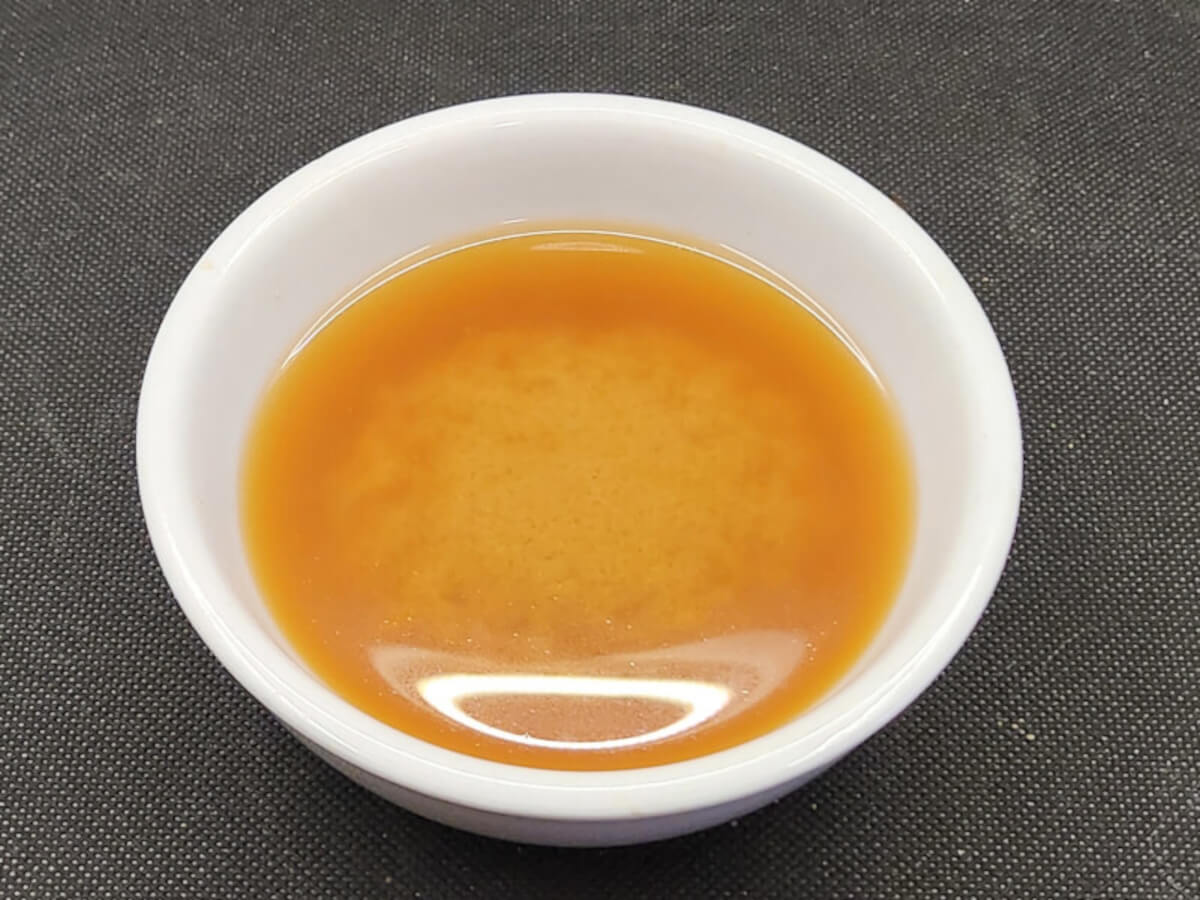Miso soup is super easy to make at home, especially with Miso Paste. You can add in all kinds of ingredients like, Green Onions, Chives, Mushrooms, Tofu or various other meats. As well as Hondashi, which traditional Miso Soup is based off of. It can be enjoyed as a Breakfast, Lunch, or Dinner filled out with added ingredients or as a side dish, most popular with Sushi.
While the Hondashi & Miso Paste is extremely quick and easy to make Miso soup with. There are some key points you will want to keep in mind when making Miso Soup for the best possible outcome.
Miso Soup Ingredients
Water, Miso Paste, Hondashi, Soy Sauce. Optionally with Green Onions, Tofu and other ingredients.


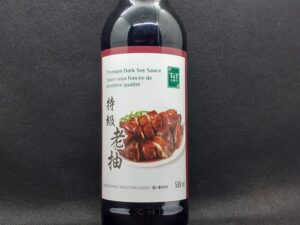
Types of Miso Paste
There are many types of Miso Paste. But most are categorized by color. White Miso is typically used for Miso Soup. However, for me, I really like the Red Miso.
Red Miso paste
- Red Miso (Aka Miso): Red miso has a stronger, more robust flavor due to a longer fermentation process. It’s made with a higher proportion of soybeans and usually has a deeper, reddish-brown color. This miso is common in hearty soups and stews.
- Flavor Profile: Bold, savory, and umami-rich.
- Taste Notes: Stronger, deeper, and saltier than white miso, with a more intense umami flavor. The longer fermentation process gives it a more pronounced, earthy taste with a bit of bitterness.
- Use: Works well in hearty dishes like miso soups, stews, marinades, and meat-based recipes.
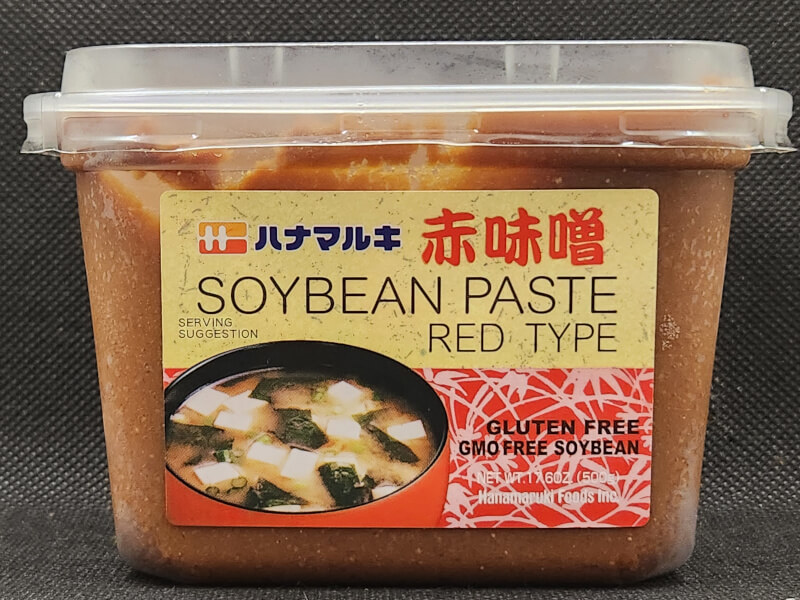
White Miso Paste
- White Miso (Shiro Miso): This type is made with a higher proportion of rice or barley and has a mild, sweet flavor. It’s typically lighter in color and is often used in soups, dressings, and marinades.
- Flavor Profile: Mild, sweet, and delicate.
- Taste Notes: It has a light, slightly tangy taste with subtle sweetness. The fermentation process is shorter, which results in a softer, less salty flavor.
- Use: Ideal for lighter dishes like soups, dressings, and sauces, as well as for flavoring vegetables and fish. Commonly served in a small sipping bowl alongside sushi.

Yellow Miso Paste
- Yellow Miso (Shinshu Miso): Yellow miso is somewhere between white and red miso, with a slightly sweet, umami-rich flavor. It is made with a mixture of rice or barley and soybeans, and its fermentation time is longer than white miso but shorter than red miso.
- Flavor Profile: Balanced, savory, and slightly sweet.
- Taste Notes: Yellow miso offers a middle ground between the mildness of white miso and the strength of red miso. It has a gentle umami flavor with a slight sweetness and a bit more saltiness than white miso.
- Use: Great for soups, sauces, and marinades, and works well with both vegetables and meats.
Hondashi
Many people will simmer Kombu to create the Dashi stock. I skip this process with an instant Dashi using Hondashi. These are small granules that can be added to water to make Dashi. About 1 tsp per 1 cup of water, but you can vary this amount based on preference.
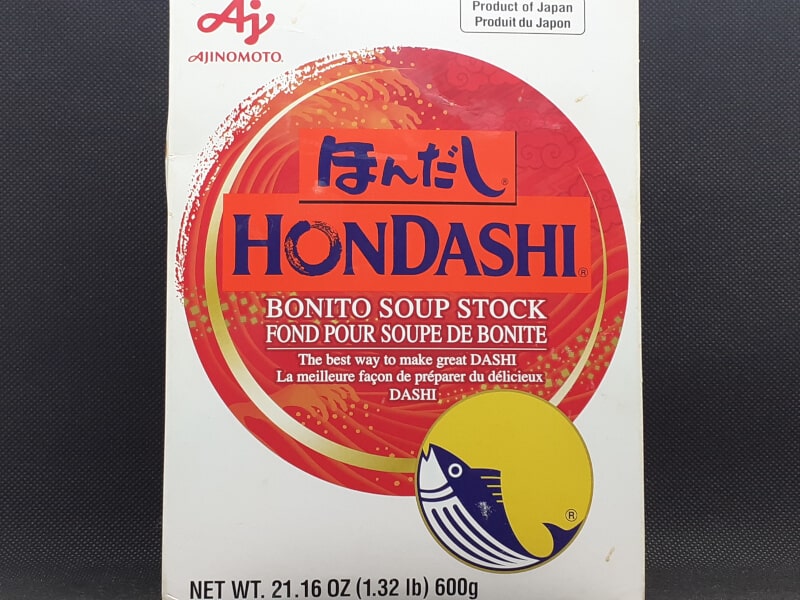
Soy Sauce
Soy sauce is optional and can be included for added saltiness and color. There are many types of Soy sauce you can add as well. Keep in mind, some soy sauces are saltier than others. Adjust not only on the soy sauce you are adding, but the type of miso paste being used.


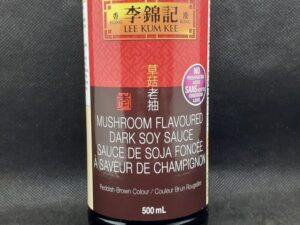

Green Onions
Green Onions are optional, but offer up exception herby flavors and color to the miso soup. Add as much as desired, at the very end before serving. These can also be placed into the serving bowls with Miso Soup.

How to make Miso Soup
Miso Soup is pretty easy and quick to come together. It’s good to have for Breakfast, Lunch or a Snack and even a Main Course with added Protein, Veggies and optionally some noodles.

Miso Paste
Set aside the miso paste in a small bowl to later be tempered before adding to the pot.
This can optonally be passsed through a fine sieve to ensure smoothness and no clumping after tempering.

Boil the water with Hondashi
Bring to a boil, Water, Soy Sauce with Hondashi in a small soup pot.
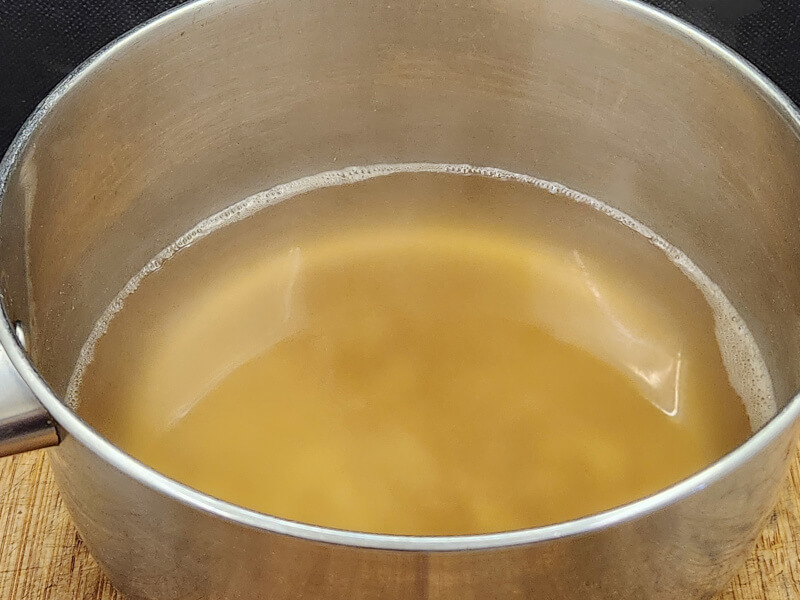
Add additional ingredients
Add any additional ingredients such as white parts of Green Onions, Garlic, Ginger, Mushrooms, and simmer for 3-5 minutes or softened to your liking.
Ingredients such as the top parts of Green Onions or Tofu can be added last, after the Miso Paste has been mixed in.
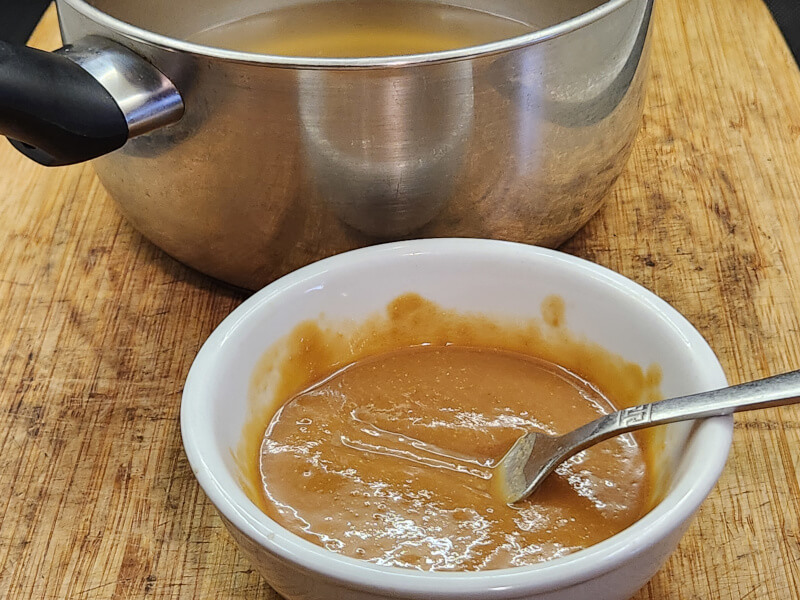
Temper the Miso Paste
Shut the heat off and let it cool a bit. Add a small amount of Hot Water to Miso Paste to mix well and ensure it is dissolved. Empty into the pot and mix before serving.
Tempering prevents clumping and protects the flavor, preserving the richness and depth of flavor.
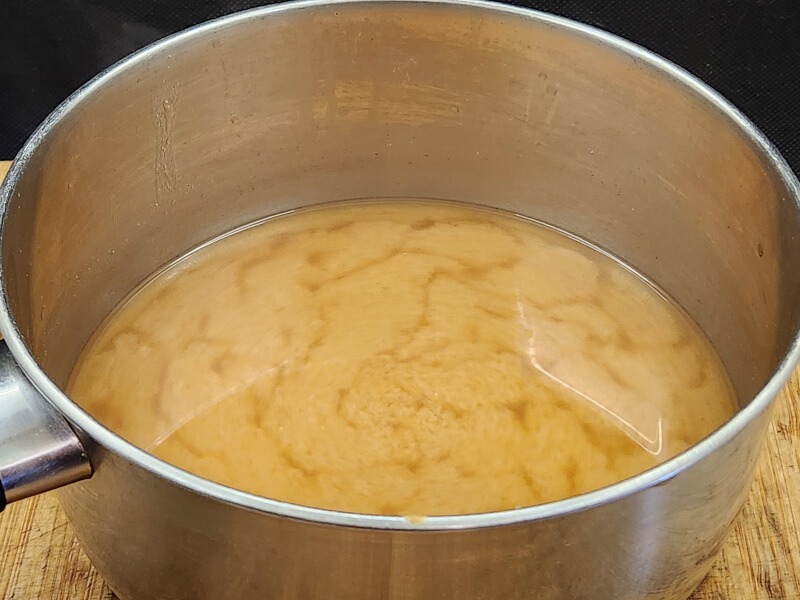
Miso Soup
After tempering and mixing it through. Quick cook ingredients can be added such as Tofu, Green Onions, Bean Sprouts etc… Ladle the miso soup into bowls and serve.
Why add Miso Paste last
The main reason, Miso paste is added last and at lower temperatures is to preserve its flavor and aroma and not really to preserve the probiotics. Since Miso Paste with its beneficial probiotics are destroyed by heat above 140F/60C. This is however why in some cases it is added to certain soups when serving, because these lower temps does keep the probiotics intact and one can obtain numerous health benefits doing so.
What to add to Miso Soup
While the most basic miso soup is good to serve in a small bowl for sipping and is very simple to prepare. There are of course some additional ingredients that can be added to elevate the flavors, and fill it out more. Some good choices are the following;
- Green Onions
- Ginger
- Garlic
- Carrots
- Mushrooms (shiitake, Enoki, etc…), some mushrooms can be seared in oil before adding the Hondashi broth. This can include softening the Garlic & Ginger the last 30 seconds or so, after searing the mushrooms. Other mushrooms are simmered for about 5 minutes before tempering the miso paste.
- Tofu after the miso paste has been tempered and mixed through or placed into the bowls with miso soup ladle over.
- Noodles
- Mirin
- Wakame Seaweed
- and uncommon, but I like it is White Fungus or Snow Fungus
- Bean Sprouts added at the end
- Chili Flakes like Gochugaru

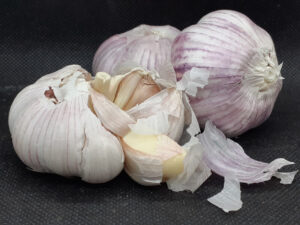



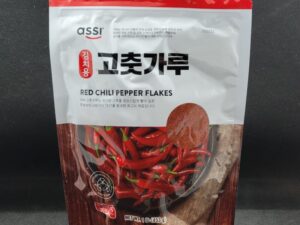
Root Vegetables
If using root vegetables, place them into the Hondashi Broth before bringing it to a boil. Reduce the heat and simmer 10–15 minutes, depending on size.
Leafy Greens & Mushrooms
Leafy Greens & Mushrooms can be added to the simmering hondashi broth for about 3-5 minutes. With some certain mushrooms, they can be seared before adding in the hondashi stock to bring to a boil. Otherwise simmered for about 3-5 minutes.
Where to serve Miso Soup
Miso soup is a dish commonly served in a small sipping bowl with Sushi. It can also be served with various dumplings and even fried wontons or just on the side of a main protein and rice dish. It can also be enjoyed just by itself at any time or as a starter.
Miso Soup Diet Type
Miso Soup fits almost every diet type, depending on what type of Miso you pick up, and you will have to watch for this, but below is how to make it fit.
- Diabetic — is diabetic Friendly
- Gluten Free — Miso soup is not generally gluten-free. Although, there are gluten-free Miso paste options available.
- Keto — Miso soup can be Keto Friendly, but avoid adding in high carb ingredients and consuming too much.
- Kosher/Halal — Some Miso paste are not Halal or Kosher. Be sure to pick Miso paste that has been Kosher or Halal certified.
- Vegetarian — Miso paste is naturally vegan. Some Miso Soups will contain fish stock, but this is mainly in restaurants and not in the Miso paste itself. In this recipe, hondashi is used which contains fish, so this can be omitted.
- Whole Foods — Miso Soup is not considered a whole food. While high in nutrients and a fermented product and a complete source of protein. It is a minimally processed food that contains other ingredients to make Miso Paste.
Freezing Miso Paste
You can freeze Miso paste for up to 6 months without compromising the flavor significantly and up to a year. Whenever I buy a container of Miso Paste. I place it into the side door of the freezer. It does not freeze solid, and you can grab however many Tablespoons you need at any time to make Miso Soup.
Miso Soup key Points
- Temper the Miso Paste: Tempering the Miso Soup with the Hot water assist in thinning out the paste so that it more readily dissolves into the hot water when added. Avoiding any clumps of miso paste.
- Mix Miso Paste last: Miso paste is tempered and added last to a pot of Hondashi broth off heat, or after boiling, removing it from the heat and letting it cool a few minutes before tempering.
- Never Boil Miso Soup: If it is added at the start of cooking, or to boiling water, the flavors lose their subtle sweet and savory tones, and you’re left with a much more one-dimensional taste.
- Serving Miso Soup: Miso soup is ideally served best around 75C/167F.

Equipment
- 1 Pot
- 1 Small Bowl for tempering miso paste
Ingredients
- 2 C Water
- 2 tsp Hondashi
- 1-2 tsp Soy Sauce - Optional – more or less depending on preference of salt levels.
- 2 Tbl Miso Paste - Red, White, or Yellow – see notes
- 1-2 Stalks Green Onions - Optional
Instructions
- Place Water, Hondashi, and Soy Sauce in a small soup pot and bring to a boil.
- Shut the heat off and wait a few minutes for the hondashi broth to cool a bit. Add 2 Tbl or slightly more of the hot broth to 2 Tbl of Miso Paste to mix well and ensure it is dissolved. Empty into the pot and mix.
- After the miso paste has dissolved into the soup. Optionally add Green Onions and other quick cook ingredients. Ladle into serving bowls and serve right away.

